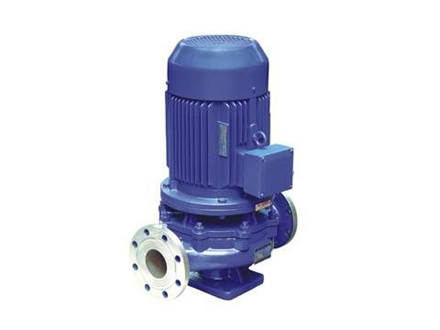
If you work in industries like LNG processing, semiconductor manufacturing, or medical research, you know how tricky it is to move low-temperature fluids—things like liquid nitrogen, liquid oxygen, or liquefied natural gas. These fluids need to stay super cold, and regular pumps just can’t handle the extreme temperatures without breaking down or losing efficiency. But lately, a new pump has been turning heads in these fields: the cryogenic centrifugal pump. It’s supposed to solve the big problems that have plagued low-temperature fluid transfer for years. But what makes this pump so different from the ones we’ve used before? Let’s take a closer look.
First, let’s talk about why regular pumps fail when it comes to cryogenic fluids. Most pumps are built with materials that get brittle when temperatures drop below -100°C, and their seals often leak because the cold causes parts to shrink or warp. That means frequent breakdowns, wasted fluids, and even safety risks—since some low-temperature fluids can be dangerous if they escape. The team behind the cryogenic centrifugal pump spent three years studying these issues, talking to over 300 engineers and plant managers from around the world to figure out exactly what was needed.

The first thing they fixed was the materials. The cryogenic centrifugal pump uses a special alloy blend—titanium alloy for the impeller and stainless steel with added nickel for the pump body. These materials don’t get brittle even at temperatures as low as -269°C (that’s close to absolute zero!). I talked to a maintenance technician at an LNG plant who’s used the pump for six months, and he said, “We used to replace pump parts every two months because of cold damage. With this one? Nothing’s broken yet. It’s like it doesn’t even notice the cold.”
Then there’s the seal system—probably the biggest headache with regular cryogenic pumps. The cryogenic centrifugal pump uses a double mechanical seal with a built-in cooling loop. Instead of the seal drying out or leaking when it gets cold, the cooling loop keeps the seal at a steady temperature, so it stays tight. At a semiconductor factory I visited, they used to lose about 5% of their liquid nitrogen to leaks every month. Since switching to this pump, that loss has dropped to less than 0.5%. That’s a huge saving—liquid nitrogen isn’t cheap, and wasting it adds up fast.
Efficiency is another big win. Regular centrifugal pumps lose a lot of power when moving cold fluids—usually, they’re only about 60% efficient. But the cryogenic centrifugal pump has a redesigned impeller (the part that spins to move the fluid) that’s shaped to work with the thick, cold fluids. Tests show it’s 85% efficient—meaning it uses less energy to move the same amount of fluid. A medical lab that uses liquid oxygen for freezers told me their energy bill for the pump has gone down by 30% since they switched. “We’re not just saving money,” the lab manager said. “We’re also using less electricity, which is better for the environment. It’s a win-win.”
Durability is something else that stands out. The team put the cryogenic centrifugal pump through some tough tests: 10,000 hours of non-stop use at -196°C (the temperature of liquid nitrogen), plus 500 cycles of heating and cooling (from cold to room temp and back) to simulate real-world use. After all that, the pump still worked like new. Most regular cryogenic pumps only last about 2,000 hours under those conditions. “We used to have to shut down the plant for a day every three months to replace pumps,” said a manager at a chemical plant that uses the pump. “Now? We haven’t shut down for pump issues in a year. That’s more production time, which means more money for us.”
Right now, the cryogenic centrifugal pump is being used in some big-name facilities. An LNG terminal in Asia uses it to transfer liquefied natural gas from storage tanks to ships—they say it’s cut their transfer time by 20% because it can move more fluid faster. A space research center uses it to move liquid hydrogen (which is even colder than liquid nitrogen) for rocket fuel tests, and they say the pump’s precision has helped them get more accurate data from their experiments. “We can’t afford mistakes with rocket fuel,” a researcher there said. “This pump is reliable—we know it will do exactly what we need, every time.”
The team behind the cryogenic centrifugal pump isn’t done yet, either. They told me they’re working on a smaller version for labs that need to move small amounts of cryogenic fluids—like biotech labs that store samples in liquid nitrogen. They’re also adding a smart monitor: a sensor that tracks the pump’s temperature, pressure, and speed, and sends alerts to a phone or computer if something’s wrong. “We want to make it even easier for people to use,” the lead engineer said. “No one wants to check a pump every hour. With the monitor, they can see how it’s doing from their desk.”
At the end of the day, the cryogenic centrifugal pump is changing the game because it solves real, everyday problems for people who work with low-temperature fluids. It’s tough enough for the cold, doesn’t leak, uses less energy, and lasts longer than any other pump out there. As more plants, labs, and factories try it, I think it’s going to become the standard for cryogenic fluid transfer. It’s not just a better pump—it’s making jobs easier, safer, and more affordable. And in industries where every little mistake can cost time and money, that’s a big deal.
Copyright © 2023 Hongzheng Pump Industry (Jiangsu) Co., Ltd. - Stainless Steel Centrifugal Pump, Chemical Pump, Metering Pump - All Rights Reserved.